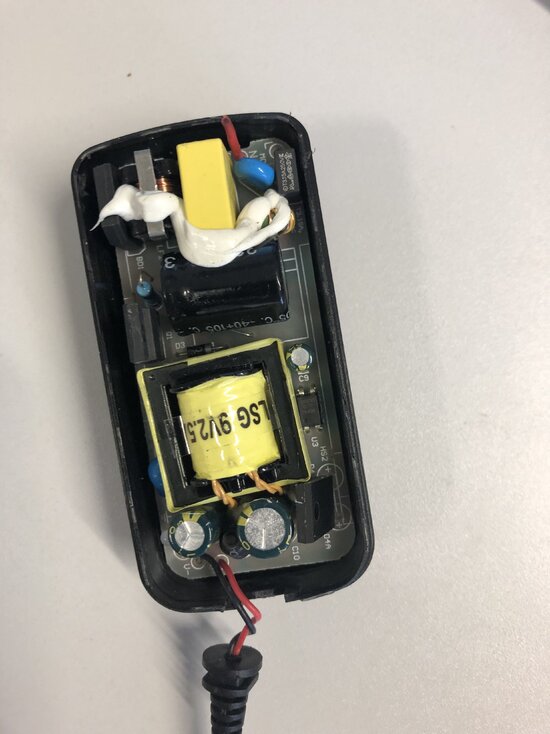- Mar 21, 2011
- 13,191
- 11,409
- 18,688
- If you're a qualified, trainee, or retired electrician - Which country is it that your work will be / is / was aimed at?
- United Kingdom
- What type of forum member are you?
- Retired Electrician
Came across this today, a device, which was plugged into a socket outlet, experience a short circuit of plug in power supply. Pics below.



I suspect the device was damaged by a heavy item being placed up against it over a period of time, causing the low voltage wiring being exposed & twisted, causing a short. So that can be rectified.
I'm questioning whether the device should have some additional fusing, like a BS1363 plug (in this incident it caused the 32A RCBO to trip), and in the last pic the authenticity of the CE mark. It does seem to be like the CE I've found on-line.
Its the fusing that perplexes me; no different to a phone charger etc I suppose. Did cause a large flash & bang.



I suspect the device was damaged by a heavy item being placed up against it over a period of time, causing the low voltage wiring being exposed & twisted, causing a short. So that can be rectified.
I'm questioning whether the device should have some additional fusing, like a BS1363 plug (in this incident it caused the 32A RCBO to trip), and in the last pic the authenticity of the CE mark. It does seem to be like the CE I've found on-line.
Its the fusing that perplexes me; no different to a phone charger etc I suppose. Did cause a large flash & bang.
Last edited by a moderator:


 ) the PSU doesn't conform to any safety standard. The company
) the PSU doesn't conform to any safety standard. The company 






